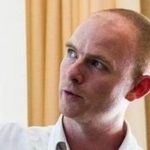The Auragen project: turning the hopes of genomic medicine into reality
There is only one way to unlock the mysteries of certain genetic diseases — analyze each patient gene by gene. Genome analysis offers great promise for understanding rare diseases and providing personalized treatment for each patient. The French government hopes to make this new form of medicine available through its healthcare system by 2025. To achieve this aim, institutional healthcare stakeholders have joined forces to develop gene sequencing platforms. One such platform, named Auragen, will be established in the Auvergne Rhône-Alpes region. Mines Saint-Étienne is one of the partners in the project. Vincent Augusto, an industrial engineering researcher at the Saint-Etienne school, explains Auragen’s objectives and how he is involved in creating the platform.
What is the purpose of genomic medicine?
Vincent Augusto: Certain diseases are caused by modifications of the genetic code, which are still not understood. This is true for many forms of cancer or other rare pathologies. In order to treat patients with these diseases, we must understand genetic alterations and be able to determine how these genes are different from those of a healthy individual. The goal of genomics is therefore to sequence a patient’s genome, the entire set of genes, in order to understand his disease and provide personalized diagnosis and treatment.
Is genomic medicine a recent idea?
VA: Gene sequencing has existed for 40 years, but it was very costly and could take up to several months to determine the entire genome of a living being. Thanks to advances in technology, a human being’s genome can now be sequenced in just a few hours. The main limitation to developing genomic medicine is an economic one, some startups offer sequencing for several thousand euros. But in order to make this service available to patients through the healthcare system, the processes must be industrialized in order to bring down the cost. And this is precisely what the Auragen project aims to do.
What is the Auragen project?
VA: It is part of the France Genomic Medicine 2025 Plan launched in 2016 with the aim of developing genomics in the French healthcare system. The Auragen project strives to create one of the two sequencing platforms in France in the Auvergne Rhône-Alpes region (the other platform, SeqOIA is located in the Ile-de-France region). To do so, it has brought together the University Hospital Centers of Lyon, Lyon, Grenoble, Saint-Étienne and Clermont-Ferrand, two cancer centers and research centers including Mines Saint-Étienne. The goal is to create a platform that provides the most efficient way to sequence and centralize samples and send them to doctors, as quickly and inexpensively as possible.
How are you contributing to the project?
VA: At Mines Saint-Étienne, we are involved in the organizational assessment of the platform. Our role is to model platform components and the players who will be involved to optimize the analysis of sequences and the speed with which samples are transmitted. To do so, we use mathematical healthcare models to find the best possible way to organize the process, from a patient’s consultation with an oncologist to the result. This assessment is not only economic in nature. We also aim to quantitatively asses the platform’s benefits for patients. The assessment tools will be designed to be reproduced and used in other gene sequencing platforms initiatives.
What research are you drawing on to assess the organization of the Auragen platform?
VA: We are drawing on the e-SIS project we took part in, in which we evaluated the impact of information and communication technologies in oncology. This project was part of a research program to study the performance of the Ministry of Health’s healthcare system. We proposed methods for modeling different processes, computerized and non-computerized, in order to compare the effectiveness of both systems. This allowed us to quantitatively evaluate the benefits of computer systems in oncologists’ offices.
What challenges do you face in assessing a sequencing platform?
VA: The first challenge is to try to size and model a form of care which doesn’t exist yet. We’ll need to have discussions with oncologists and genomics researchers to determine at what point in the treatment pathway sequencing technologies should be integrated. Then comes the question of the assessment itself. We have a general idea about the cost of sequencing devices and operations, but these methods will also lead to new treatment approaches whose costs will have to be calculated. And finally, we’ll need to think about how to optimize everything surrounding the sequencing itself. The different computational biology activities for analyzing data and the transmission channels for the samples must not be slowed down.
What is the timeline for the Auragen project?
VA: Our team will be involved in the first three years of the project in order to carry out our assessment. The project will last a total of 60 months. At the end of this period, we should have a working platform which is open to everyone and whose value has been determined and quantified. But before that, the first deadline is in 2019, at which time we must already be able to maintain a pace of 18,000 samples sequenced per year.





Leave a Reply
Want to join the discussion?Feel free to contribute!